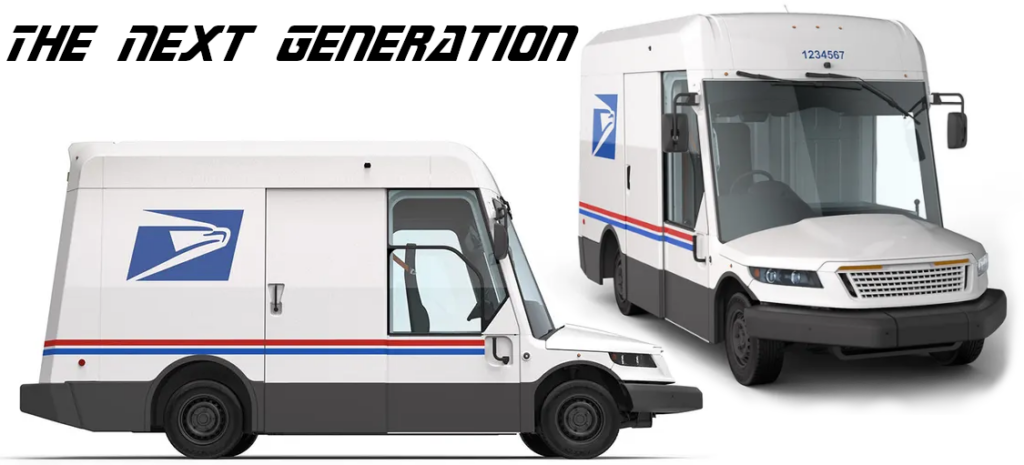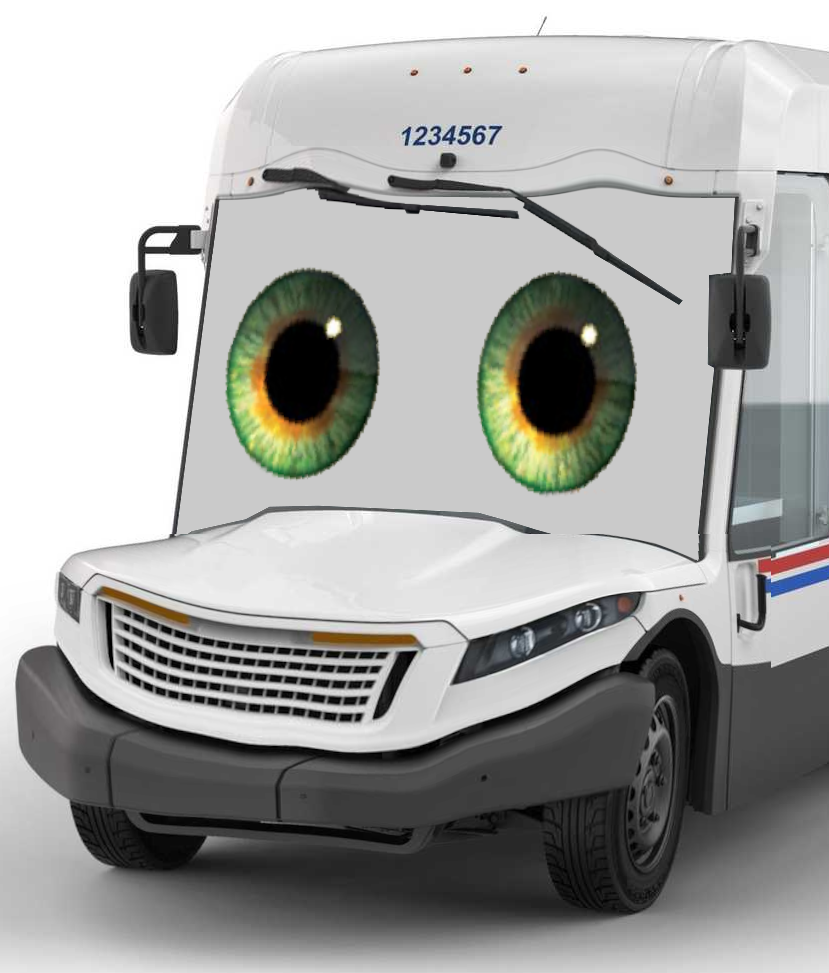One of my favorite items in my small model collection is a 1:34 scale Grumman Long Life Vehicle (LLV)1 with sliding side doors, a roll-up rear hatch, and pull-back propulsion. The iconic vehicle has been plying our city streets for nearly 40 years, reliably delivering critical communiques, bills, checks, advertisements, Dear John letters, junk mail, magazines, catalogs, post cards from afar, chain letters2, and Amazon packages.

Around 150,000 were produced for USPS between 1986 and 1994 (plus more for Canada Post, Mexico Post, and others), the vast majority of which are still on the road. Long life indeed!
The LLV represents everything right with American government contracting. The USPS set out specific requirements, driven by operational needs, and the tests that the vehicles must pass. Grumman and GM teamed up to create a vehicle with a custom body on a modified Chevy Blazer frame and a Pontiac 2.5l Iron Duke engine. It was the only vehicle to pass.
A $1.1B contract ($3.5B in 2024 dollars) allowed Grumman to invest in the factory to meet the delivery schedule, churning out a vehicle every five minutes during peak production. With economies of scale from both the commercial platform and the Grumman factory, the vehicles cost the USPS just $11,651 each in 1986 ($37,071 in 2024 dollars), the same price as a Chevy Caprice station wagon.
The LLV may have been a great value at purchase, but it’s long past due for retirement. With worse than 10 MPG fuel economy and average annual maintenance cost of $5,000, the LLVs cost the USPS more than they’re worth.
The Next Generation
You may have heard that USPS is replacing the LLV with the Oshkosh Next Generation Delivery Vehicle (NGDV), built in partnership with Ford. The NGDV has a lot of similarities with the LLV: it was purpose-built to the unique needs of the Postal Service, it is based on a commercial platform, and it prioritizes function over form. It’s also surprisingly affordable at under $60,000 each. That’s about 60% more than the original LLV, adjusted for inflation, but includes safety features and creature comforts missing from the LLV, like air bags, air conditioning, a backup camera, and collision avoidance sensors. It also has a larger cargo capacity—about 50% more by weight and 25% more by volume—to handle increased package delivery demand.

Perhaps most importantly, the NGDV has a battery electric version available. Electric is ideal for urban and suburban delivery routes with their heavy stop-and-go patterns. Regenerative braking increases fuel economy, extends the life of the friction brakes, and reduces particulate emissions in the areas where pollution is the worst. Electric drivetrains provide instant torque to get the vehicle going between every mailbox. And the vehicles typically stay in a small area around their post office, so “range anxiety” isn’t a concern3.
The USPS’s initial 50,000 unit order is about 80% internal combustion and 20% electric. I expect the ratio of electric-powered orders to increase over time as the concept is proven and post offices install smart charging infrastructure. The higher purchase cost for electric models will be quickly offset by reduced maintenance costs, increased utilization, and fuel savings.
Function over form
But, I’ve allowed myself to get off-topic. The NGDV looks like the car version of the Super Guppy4. The styling is same same but different: where the LLV was boxy, the NGDV is trapezoidy. The NGDV nods as it passes; it’s not un-friendly but it’s got a job to do. Neither snow nor rain nor heat nor gloom of night stays these couriers from the swift completion of
their appointed rounds. The NGDV knows what it is, and isn’t trying be anything else.
And I love it.
Postal vehicles prioritize function over form. The enormous windows provide excellent visibility for the shortest and tallest carriers. The low bumper maximizes the safety of pedestrians. The tall ceiling area allows more headroom and space for entry, egress, loading, and unloading.
Many car manufacturers today prioritize form: enormous grilles, non-functional “air scoops”, touchscreen controls even for critical vehicle functions, weird shifters, and terrible sightlines from the driver seat. It’s not that styling is unimportant, buyers want a car that looks good. It’s that manufacturers compromise on practicality and safety for the sake of styling, sometimes going as far as citing “consumer preference” to justify decisions that are actually based on cost savings.
A great example is turn signals. Amber turn signals are proven to reduce rear-end collisions by providing clearer signaling of intent to other drivers. Yet many North American manufacturers use red turn signals. For some cars, the brake lights are doing double-duty and so it could be a cost-savings measure. In other cars, there are separate turn signals but they’re still red, suggesting it’s a styling issue. I couldn’t find any data on reasons why manufacturers use red vs amber, but many of the same models use amber in European markets, so I think that it’s appearance- rather than cost-driven5.
I also couldn’t find any data on consumer preferences for turn signal color, but I’d be shocked if more than 10% of consumers even notice the color of turn signals, let alone care6. The fact is that some manufacturers have decided that red turn signals are worth an additional 40,000 rear-end collisions every year7, and we just accept it because (1) very few people are going to weigh turn signal color heavily in their car-purchasing decision and (2) there’s no political pressure to change the regulations.
Form over function
Form over function is, unfortunately, quite commonplace, even in the field of user experience where making intuitive and usable interfaces is the core objective. Wikipedia is one of the best, most usable sites out there, but check out the video below8 where a supposedly professional designer hacked it to pieces by drowning us in icons, making menus collapse into white space that doesn’t get used for anything else, and replacing the detailed context box at the end of each article with a handful of “see also” buttons9.
I personally don’t care much for form. I disable all the slick-looking aspects of my phone10 and computer11. I realize that I am an outlier here. But, I also know that we can prioritize function while still having great form.
We can have slick animations in Windows and still have a control panel that makes sense. We can have great-looking cars that have a regular button to open the glovebox. We can have cool-looking credit cards that won’t be damaged when put into jean pockets or leather wallets. We can have ships with advanced control systems that still have physical throttles.
And that’s why I love the LLV and the NGDV, they’re functional. Not every vehicle or product has to lean quite so heavily towards function, but we’d all be better off if function was a little more important to designers.

Footnotes:
- alas, the USPS online store does not have an affiliate program, because I know you’re going to buy one; check out the Chevy Bolt, while you’re there
- yes, kids, chain letters were actual letters before they were emails from your weird uncle
- it’s not for most electric vehicle owners, either, serving mainly as a boogeyman for the electric-hesitant
- IYKYK
- for more discussion on this topic, Technology Connections has a great video; though if you’re reading this blog chances are high you’re already familiar
- and that handful that does care are probably doing stupid things like tinting their brake lights, anyway
- combining this statistic with this report, though it’s a broad estimate as I didn’t adjust for number of each model on the road
- the video overall is about “monetizing Wikipedia” (see: enshitification) but the section from 1:20 to 4:10 are a handful of “good faith” suggestions
- not all of the design changes are bad, but these three unnecessarily remove functionality without adding any value
- Settings -> Developer Options -> Window Animation Scale -> Animation Off
- Win+u -> Display -> Show Animations in Windows -> Off